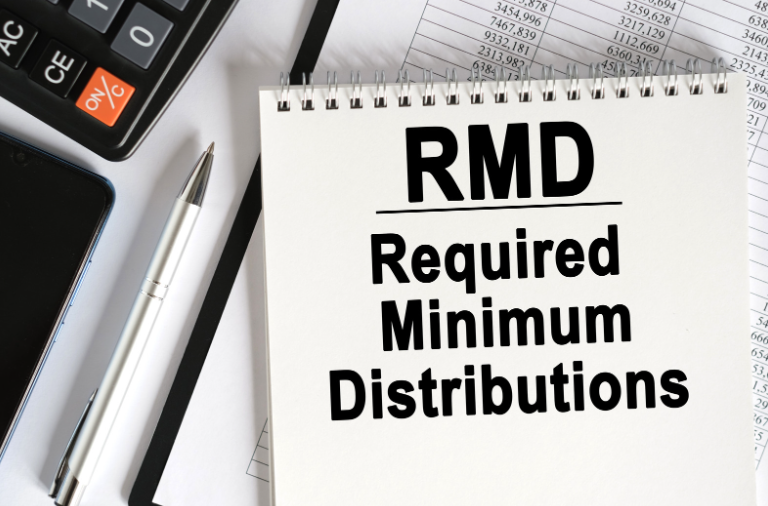Navigating retirement planning involves understanding Required Minimum Distributions. Required minimum distributions (RMDs) are the minimum amounts that IRA and retirement plan account owners must start withdrawing annually upon reaching a certain age, which is currently 73. Navigating the intricacies of RMD calculations is vital for robust financial planning, particularly with the changing regulations for Roth IRA accounts and the advent of new retirement-related legislation.

Understanding Required Minimum Distributions (RMDs)
Understanding Required Minimum Distributions (RMDs) necessitates a grasp of several crucial points:
- Calculation Basis: The required minimum distribution for any given year is calculated by dividing the IRA account balance as of December 31st of the prior year by a distribution period from the IRS’s ‘Uniform Lifetime Table’. This IRS-mandated method aligns the distribution with the account holder’s life expectancy, ensuring a personalized approach.
- Tax Implications and Penalties:
- RMDs are taxed as ordinary income, potentially affecting Social Security benefits and Medicare premiums.
- Non-compliance with required minimum distribution obligations triggers a hefty 25% tax penalty, underscoring the necessity for timely and precise RMD withdrawals to avoid financial repercussions.
- Applicability:
- The scope of required minimum distribution rules extends to tax-deferred retirement accounts, including 403(b) plans, 401(k) plans, and 457(b) plans, as well as Traditional, rollover, SIMPLE, and SEP IRAs, making it a critical component of retirement planning.
- While Roth IRAs enjoy an exemption from required minimum distributions during the account owner’s lifetime, designated Roth accounts within 401(k) or 403(b) plans are not spared from RMD regulations in certain circumstances.
Understanding these aspects is essential for effective retirement planning and avoiding unnecessary penalties.
Determining Your RMD Start Date
Pinpointing the accurate commencement date for required minimum distributions is a cornerstone of retirement planning. This crucial timeline is influenced by various elements such as the type of IRA involved and the retirement account holder’s employment status, with a simplified guide below to assist in understanding your RMD start date:
- For Traditional IRA, SEP IRA, and SIMPLE IRA Owners:
- Start Age: RMDs must begin once the account holder reaches age 73.
- First RMD Deadline: For IRA holders, the inaugural required minimum distribution must be completed by April 1st of the year that follows the individual’s 73rd birthday, marking a key date in the retirement timeline.
- For Owners of 401(k), 403(b), and Other Defined Contribution Plans:
- Retirement Clause: IRA account owners can delay their required minimum distribution (RMD) until the year they retire, with the exception of those who are 5% or more owners of the business sponsoring the retirement plan.
- Start Age: Similar to IRAs, RMDs must start at age 73.
- First RMD Deadline: The initial required minimum distribution for an IRA must be taken by April 1 of the year following the later of the calendar year in which the account holder reaches the age of 73.
- Annual Deadline for RMDs: After taking the first required minimum distribution, IRA account holders must adhere to a deadline of December 31st for all subsequent RMDs each year.
It’s crucial for IRA account owners to adhere to these RMD timelines to avoid a hefty tax penalty, specifically a 25% excise tax on the amount that should have been withdrawn. This guide is designed to simplify the process, ensuring you’re well-informed and prepared to withdraw the correct RMD amount on time.
How to Calculate Your RMD

Calculating your required minimum distributions (RMDs) for your IRA involves understanding and applying specific IRS guidelines, an essential part of financial planning for your retirement accounts. Here’s a streamlined approach to navigate this process:
- General Calculation Method:
- To determine the required minimum distribution for your IRA, start by establishing the Fair Market Value (FMV) of your retirement account as of December 31 of the previous year.
- Identify the correct life expectancy factor from IRS tables, such as the Uniform Lifetime Table. For most IRA owners, the required minimum distribution is calculated using the Uniform Lifetime Table, or the Joint Life and Last Survivor Expectancy Table if your spouse is more than 10 years younger and the sole beneficiary of the IRA.
- Divide the FMV by the applicable life expectancy factor to find your RMD.
- For Multiple Accounts:
- IRAs: To meet the required minimum distribution (RMD) guidelines, calculate RMDs for each IRA individually; however, you have the flexibility to withdraw the total RMD amount from a single IRA or a combination of your IRAs.
- 401(k)s and Similar Plans: Each account’s RMD must be calculated and withdrawn separately.
- Inherited IRAs: Adhering to specific rules based on the original owner’s age and RMD status is crucial, and when dealing with an inherited IRA, it’s possible to aggregate the required minimum distributions from IRAs inherited from the same person.
- 403(b) Plans: For each IRA contract, the required minimum distribution must be calculated separately, but the total RMD amount can be conveniently withdrawn from one or several of the contracts.
- Using the IRS Tables:
- For instance, if you are 73 years old, the Uniform Lifetime Table suggests a distribution period of 26.5 years. If your IRA’s Fair Market Value (FMV) is $100,000, your required minimum distribution would be approximately $3,773.58, calculated by dividing the FMV by the distribution period ($100,000 / 26.5).
This method ensures adherence to IRS regulations regarding required minimum distributions and helps avert potential penalties, making RMD calculations an essential and manageable part of IRA compliance and retirement planning.
Managing RMDs Across Multiple Accounts

Navigating Required Minimum Distributions (RMDs) across various accounts can be complex, but a solid understanding of the rules can streamline the process and avert expensive tax errors, making it a key strategy in financial planning.
- Individual Retirement Accounts (IRAs):
- Calculate each IRA’s RMD separately.
- The flexibility of withdrawing the total required minimum distribution amount from one IRA or a combination of IRAs offers strategic options for managing your retirement funds.
- 401(k)s and Employer-Sponsored Plans:
- RMDs must be calculated and withdrawn separately for each account.
- Employees who own less than 5% of the company can leverage a strategic advantage by delaying their required minimum distributions (RMDs) until retirement, allowing for ongoing IRA contributions and potential growth.
- Inherited IRAs:
- Spousal beneficiaries are granted the flexibility to transfer inherited assets into their own IRA, which can enable them to utilize the Uniform Life Expectancy Table for required minimum distribution calculations, potentially leading to reduced annual withdrawals.
- Non-spouse beneficiaries of an IRA are mandated to withdraw the total account balance within a decade of the original owner’s passing, underscoring the necessity for meticulous tax planning to mitigate tax burdens.
Ignoring these required minimum distribution guidelines can trigger a hefty 25% penalty on the undistributed amount. It’s therefore vital for IRA holders to diligently manage their RMDs, particularly when juggling multiple accounts, to adhere to tax regulations and preserve their retirement nest egg.
Conclusion
Throughout this article, we’ve demystified the intricacies of Required Minimum Distributions (RMDs), illuminating their calculation methods, tax implications, and the critical role of managing these distributions across various IRAs. A thorough approach to calculating your RMD, grasping the key start dates, and adeptly handling distributions are fundamental to savvy retirement and financial planning, ensuring compliance and fostering the growth of your retirement funds.
As we conclude our detailed exploration of RMDs, it’s important to recognize the value of being well-informed and prepared for this crucial element of retirement planning. Whether you’re determining your initial required minimum distribution or orchestrating distributions among multiple IRAs, the guidelines presented serve as a beacon for adherence and financial optimization in your retirement journey. Consulting with a financial advisor is a wise step to take, where we can delve into all the details you need to know about your required minimum distributions. Embracing a proactive and knowledgeable approach is your best defense for securing a financially stable retirement.
FAQs
Q: How is the Required Minimum Distribution (RMD) determined?
A: To determine your required minimum distribution (RMD), the IRS employs a specific formula that considers your IRA and other retirement accounts’ total balances, your age, and life expectancy factors for both you and any potential beneficiaries. By dividing your account balance by a designated life expectancy factor, the IRS calculates the amount you must withdraw annually.
Q: Can you explain the RMD calculation process using the IRS table?
A: Absolutely! To accurately calculate your required minimum distribution using the IRS RMD table, first ascertain the total balance of your IRA. Next, find your age on the IRS table to identify the corresponding distribution period number. Divide your IRA balance by this distribution period number to compute your RMD, ensuring compliance with IRS regulations.
Q: Where do I find the amount I need to withdraw for my RMD?
A: To figure out your required minimum distribution for the current year, take the balance of your IRA at the close of the preceding year and divide it by the IRS-provided life expectancy factor. The IRS offers life expectancy tables that assist in selecting the appropriate factor based on your age and whether you’re calculating a joint life expectancy with your spouse for your RMD.
Q: What does the 4% rule refer to in the context of RMDs?
A: The 4% rule is a strategy for retirement that stands apart from the RMD calculation. It advises retirees to withdraw 4% of their total investment portfolio in the first year of retirement, with subsequent adjustments for inflation to help ensure the longevity of their savings. This rule is often considered when planning for a sustainable retirement income.























